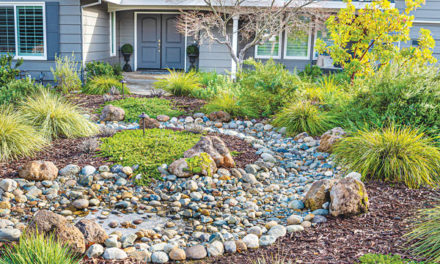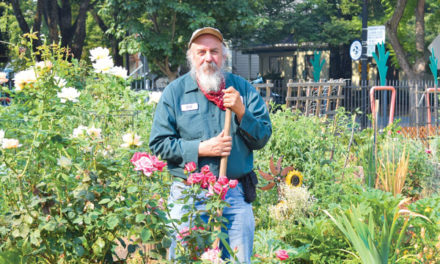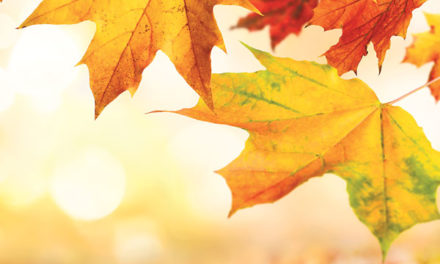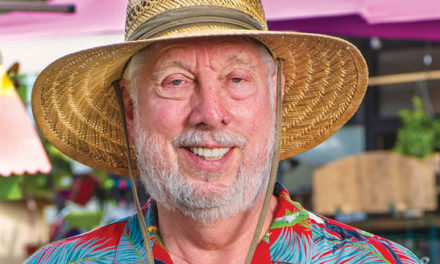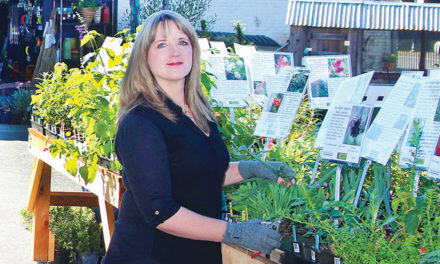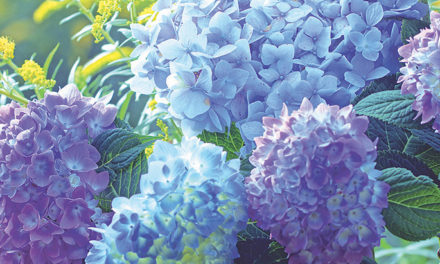Live and Learn
Gardening Goofs Can Be Half the Fun
By Anita Clevenger
September 2018
It was our first visit to our son’s new townhouse. Kurt and his girlfriend Shelly had purchased a strawberry pot, filled its little openings with blue lobelia, scarlet salvia and white alyssum, and put it on the front stoop. The plants were drooping woefully in the blazing sunlight. As soon as Kurt and Shelly opened the door, I blurted, “These plants need water now!” I tried, more diplomatically, to explain that their roots needed more soil and space to grow, and it would be very hard to keep them moist enough to survive in that pot. In my heart, I was lamenting that they were making the same mistakes I made when I began gardening. Why didn’t they consult me, the Master Gardener in the family? Does each generation need to repeat the last’s gardening goofs?

My heart sunk further when I learned they had bought a fuchsia. They confessed that “she” was not looking good. I explained that fuchsias need indirect light and moisture, and are not easy to grow in Sacramento. My husband and I have a long, shameful history as fuchsia torturers. A north-facing wall seemed like a perfect place, but they clung to life there in a straggly sort of way until they expired.
When we went on a two-week summer vacation, our neighbor Bill took care of our garden. Upon our return, we were amazed at how good the fuchsias looked, complimented him on his green thumb and tried for years to match his success. He confessed much later that they died while we were gone and he had secretly replaced them. This bit of news ended our fuchsia futility.
Kurt and Shelly chose wisely as well. They purchased a bougainvillea for their balcony, where a neighboring cork tree will shelter it from winter cold. At the top of the strawberry pot, they planted lavender, a woody, drought-tolerant plant that does well with sun and good drainage.
As predicted, the other plants in the strawberry pot died in short order. The fuchsia is doing better in a more protected spot, but not looking good.
Kurt and Shelly are undaunted. “Finding out on your own is some of the fun,” Kurt told me. “We’ve really enjoyed trying things out.”
There’s a lot to be said for learning from experience, although it can cost money and time and be very frustrating. You can’t just buy a plant that catches your eye and assume that it will grow well. You must be aware that not all plants on the shelves are suited for Sacramento or your particular growing conditions. The plants themselves can be problematic, too.
As a sales strategy, commercial growers push their plants with fertilizer and put them into stores when they are flowering at their showy peak. Such over-stimulated plants will need continued fertilizer and plenty of water to keep them going. They probably have very crowded roots which need to be loosened and spread out before planting. Plants are offered in the stores when people are planting, whether or not it is the right time of year. For example, you often find parsley and cilantro among herbs sold in late spring, despite the fact that these cool-season plants will bolt (send out flowering stalks and go to seed) as soon as it gets hot. Perennials and woody plants are offered in the spring, too, even though the best time of year to plant them is the fall.
Gardeners also learn is that location is very important. Kurt tried for years to grow cactus and succulents in various dark apartments with limited success. In the filtered bright light on the townhouse’s balcony, his collection is now thriving and increasing.
When I began gardening in Sacramento, my main resources were Sunset’s “Western Garden Book” and my friends and neighbors. Today’s beginning gardeners can also find a huge amount of information on the internet. In 1980, a couple of years after I moved into my East Sacramento home, Sacramento County started the first Master Gardener Program in the state. New and experienced gardeners can attend workshops and open garden days at the Fair Oaks Horticulture Center; contact the UC Master Gardener Office for advice; and visit sacmg.ucanr.edu for scientifically based information tailored to our local area.
Kurt and Shelly will continue to learn on their own, but they’ve begun asking me for advice, which I’m delighted to give. Isn’t that what mothers (and Master Gardeners) are for?
Anita Clevenger is a Lifetime Sacramento County Master Gardener. For answers to gardening questions, contact the UC Master Gardeners at (916) 875-6338 or mgsacramento@ucanr.edu. The next Open Garden is Saturday, Sept. 8, from 9 a.m. to noon at the Fair Oaks Horticulture Center, 11549 Fair Oaks Blvd.
































